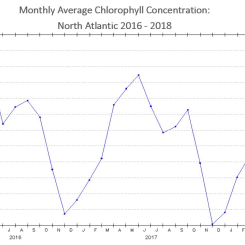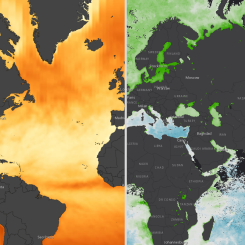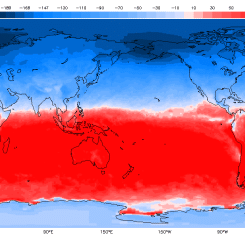Mini Lesson/Activity
Using Models to Explore Chlorophyll and Radiation Data
Overview
This mini lesson engages students by watching a NASA video related to seasonal chlorophyll concentration as it relates to net radiation using NASA's Aqua satellite. Students will examine the model and answer the questions.
Student Directions
Review the video, Chlorophyll and Net Radiation, and answer the following questions.
Steps:
- Check with your instructor on how to submit your answers.
-
Review the color bar scale for net radiation. What do the colors mean?

- Review the color bar scale for chlorophyll concentration. What do the colors mean?

- Describe the values for net radiation during the spring and fall in the Northern Hemisphere.
- List the value of net radiation in the Northern Hemisphere during the summer, then list the value of net radiation in the Northern Hemisphere during winter. What do you notice?
- Describe the patterns you observe between net radiation and chlorophyll concentration?
- Observe the contrast between the Northern Hemisphere and the Southern Hemisphere in net radiation values. Which two seasons experience a greater difference? Fall and spring or summer and winter? Explain.
Teacher Note
Teachers, these mini lessons/student activities are perfect "warm up" tasks that can be used as a hook, bell ringer, exit slip, etc. They take less than a class period to complete. Learn more on the "My NASA Data What are Mini Lessons?" page.
Teachers who are interested in receiving the answer key, please complete the Teacher Key Request and Verification Form. We verify that requestors are teachers prior to sending access to the answer keys as we’ve had many students try to pass as teachers to gain access.
Disciplinary Core Ideas:
Crosscutting Concepts:
- Patterns
- Cause and Effect
- Scale, Proportion, and Quantity
- Stability and Change
Science and Engineering Practices:
- Developing and Using Models
- Analyzing and Interpreting Data








